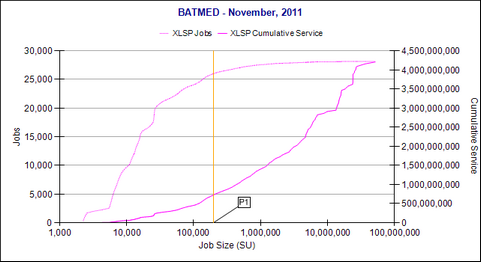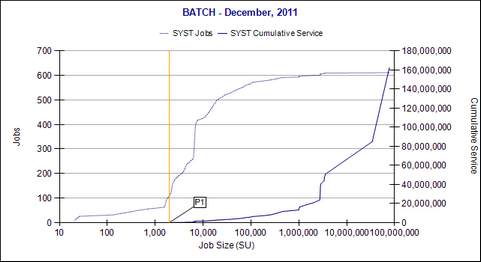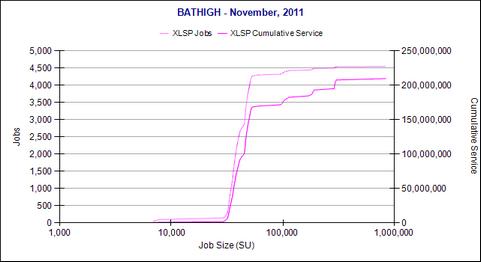This report shows the distribution of job sizes and the cumulative service for each service class. It is intended to help determine the duration of service class periods.
Service class periods allow you to give different service to small and large jobs in the same service class. They make most sense when most jobs are small, but large jobs use the majority of the service in the service class. Typically, the duration of first period is set so that the many, small jobs that together use little service are separated from the fewer, large jobs that consume most of the service in the service class.
The report plots the number of jobs completed and the cumulative service used versus the job size. The chart can show if there is a large gap between the number of jobs completed and the cumulative service consumed. That may indicate a good point to start a new service period.
Existing period durations are also shown which can give you an idea whether they are appropriate.

First period duration appears to be reasonable. Most jobs end in period 1, but most service is consumed in period 2.

First period duration appears too short. Very few jobs end in period 1 and it accounts for an insignificant amount of service.

The cumulative service line follows the completed jobs line closely. Multiple periods may not be useful for this service class.
Report Parameters
Parameter |
Description |
Sysplex |
The sysplex name. |
System |
The SMF ID of the system that wrote the record. |
Type |
The type of work (from field SMF30WID). JES2, STC, TSO, OMVS etc. Note: This report is valid only if the type 30 records match the transactions as seen by WLM e.g. for JES2. It is not valid for TSO because TSO transactions do not write separate type 30 records. |
Service Class |
Filter by service class. |
SMF records used for this report
Type |
Subtype |
30 |
5 |
72 |
3 |